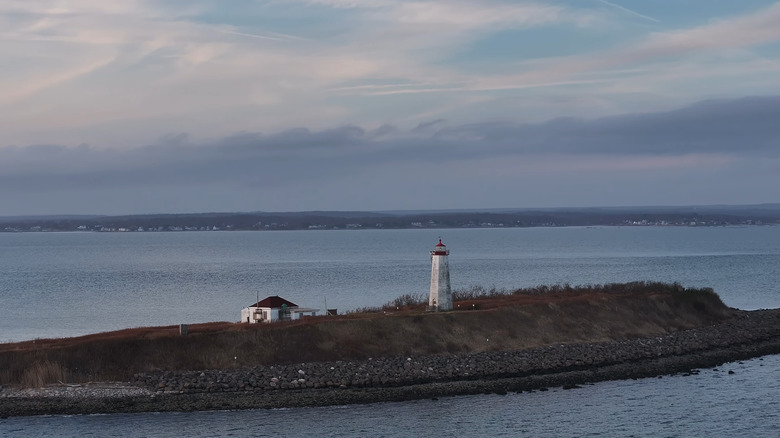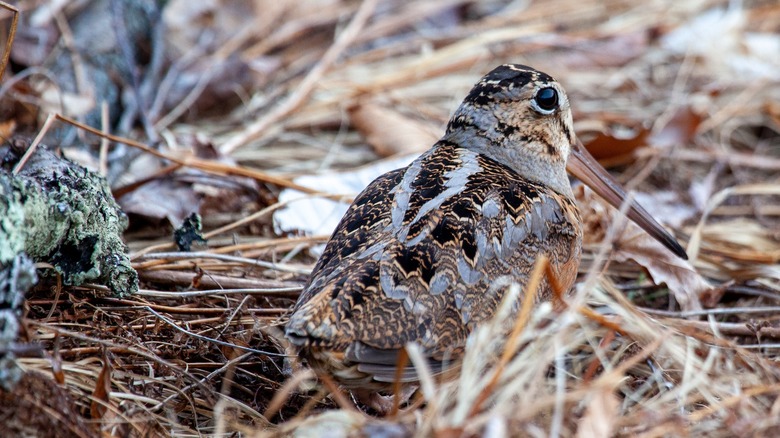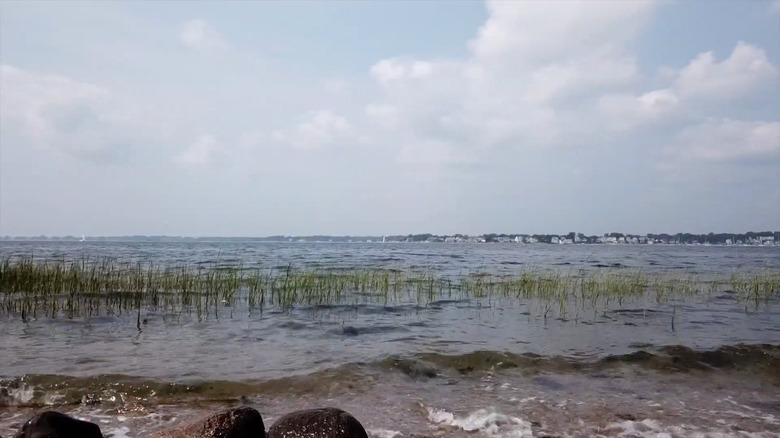A 70-Mile Stretch Of Connecticut's Coastline Is An Underrated Wildlife Preserve For Incredible Recreation
When you picture the Connecticut shore, you probably imagine cozy New England towns with views of the Atlantic — but there is a wilder side of the coast, too. The Stewart B. McKinney National Wildlife Refuge is a collection of 10 protected "land units" scattered over 70 miles along the coast of Connecticut. Established in 1972, there are locations all along the Atlantic, from Greenwich, Norwalk, Bridgeport, and New Haven, stretching all the way to the Westbrook area. There are even protected areas on the Thimble Islands and Falkner Island, as seen above. Together, they make up more than 1,000 acres of natural, unaltered landscape.
Depending on what kind of outdoor adventure you're looking for, you can choose to visit one location within the preserve or visit them all on an incredible road trip. You can expect to be on the road close to three hours driving between the stops, not including the time you spend at each location or the time it takes to reach the islands included in the refuge. If you're flying in, your best bet is the Bradley International Airport in Windsor Locks, which is just an hour's drive from the coast. The Stewart B. McKinney National Wildlife Refuge has something for everyone, whether you're an outdoor enthusiast scouting extraordinary hiking trails or a naturalist looking for one of the best birdwatching destinations that the U.S. has to offer.
Wildlife watching in the Stewart B. McKinney National Wildlife Refuge
Considering it is a wildlife refuge, it makes sense that one of the absolute best things to do while you're exploring the Connecticut shoreline is to see the animals that live there. All of the land units are good choices for seeing wild animals, especially birds, in their natural environments, but some are easier to access than others. If you're looking for a great place to start, though, consider heading to the Salt Meadow Unit, the most accessible of the refuge's 10 locales. Here you can see bluebirds, woodcocks, and many more varieties of migrating birds moving through the area amidst salt marsh and forest landscapes. To glimpse a few species from the water, consider launching a kayak and taking a paddle down the Menunketesuck River, looking out for wading heron and osprey soaring overhead.
Another easily accessible locale is the Great Meadows Unit, home to more than 270 different species of birds thanks to its many shellfish, which make an excellent food source for them. While this place is best loved by bird watchers, you may also catch a glimpse of deer and beavers during your exploration. Both of these locations of the refuge have designated wildlife observation platforms. Of course, creatures of all kinds make their home in these forests and wetlands, but these platforms have been positioned in the ideal place for visitors to catch a glimpse of them. You might even spot some ornithologists there with you, observing the wild birds in their natural habitats.
The best hiking trails for exploring the refuge
If you're heading to the Salt Meadow Unit, make sure not to miss the interpretive trail. This incredible route takes you right along the coast to let you see tall herons and ibis striding through the marshes and butterflies flitting between the flowers along the trail. In the Great Meadows Unit, check out the Great Meadows Trail for a short, easy walk to the tidal wetlands. While it's relatively remote and quiet, you could definitely finish this trail in 15 minutes and be back at the parking lot in half an hour, but you won't want to. From rabbits to black ducks, there's too much to see to rush straight through.
If you're looking for a beautiful natural experience, surprisingly close to the hustle and bustle of New York City, consider seeking out the Sheffield Island Trail in the Norwalk Islands Unit, as pictured above. This place offers a rare opportunity to see herons up close while nesting. You'll need a permit to walk here, or to sign up for a special tour, but if you're a bird lover, it's well worth the extra effort to see it for yourself. For more outdoor recreation on the Connecticut coast, head 16 miles east to Rocky Neck State Park, a dreamy beach paradise with secret coves and forest trails.


